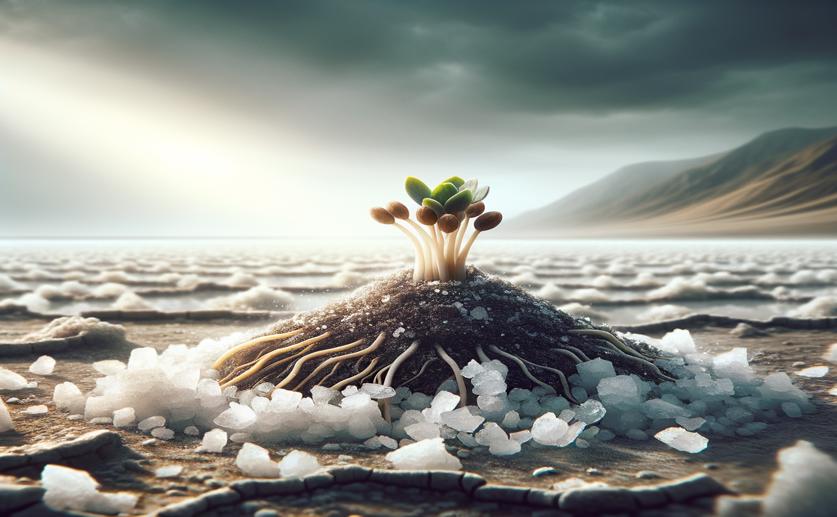
Soil Salinity Affects Seed Germination and Persistence in Salt-Tolerant Plants
Jim Crocker
27th June, 2024

Image Source: Natural Science News, 2024
Key Findings
- The study focused on Atriplex centralasiatica, a plant from the semi-arid, saline Ordos Plateau in Inner Mongolia, China
- Seasonal soil salinity and burial depth significantly affect the dormancy and germination of the plant's three types of seeds
- Type A seeds germinate quickly and are depleted within the first growing season, while types B and C exhibit seasonal dormancy cycles and can persist in the soil for up to two years
EnvironmentEcologyPlant Science
References
Main Study
1) Soil salinity regulates spatial-temporal heterogeneity of seed germination and seedbank persistence of an annual diaspore-trimorphic halophyte in northern China
Published 26th June, 2024
https://doi.org/10.1186/s12870-024-05307-x
Related Studies
2) Dynamics of the diaspore and germination stages of the life history of an annual diaspore-trimorphic species in a temperate salt desert.
3) Sand burial helps regulate timing of seed germination of a dominant herb in an inland dune ecosystem with a semiarid temperate climate.
4) Offspring polymorphism and bet hedging: a large-scale, phylogenetic analysis.



 9th June, 2024 | Jenn Hoskins
9th June, 2024 | Jenn Hoskins